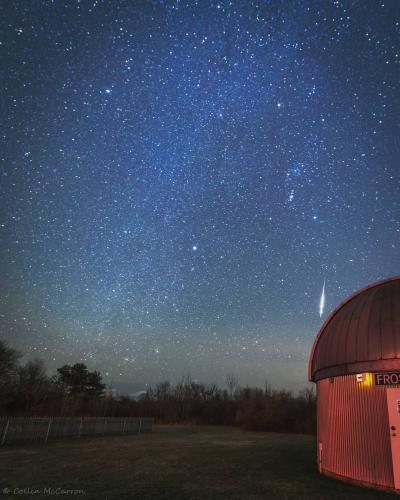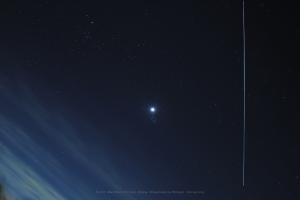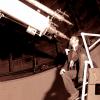Celebration of Space - August 13, 2021
This past week the fantastic Perseid Meteor Shower came to a peak. It was a tough couple of days with very uncomfortable conditions and the primary peak night completely fogged out. Historically speaking, the Perseid peak occurs during a difficult time in Southern New England, weather wise. For starters, it’s the peak of wildfire season as well, and although wildfires are happening on the western side of the nation, the smoke from those fires becomes very prevalent over our region. But we also experience a shift in the winds along the coast. Through July the winds generally blow onshore, but in early August I have observed that the winds begin to blow offshore, which pushes all the humidity out over cooler air, causing it to condense into fog along the coast. As a result, the Perseids are nearly always hazed and fogged out for us. Though we didn’t get anywhere near spectacular, conditions panned out quite nicely last night, with visitors spotting dozens of Perseid meteors and several fireball meteors. I stuck around until 3:00 am this morning and caught a brief increase in meteor activity silhouetted by intense lightning in the region. Certainly a New England summertime meteor shower! Over the next few nights Perseid meteors will continue to streak the sky with frequencies decreasing by nearly half per night. If you find yourself out late under a clear sky and have an hour to blow, lay out under the stars and you may catch sight of a few lingering Perseid meteors.
This coming Thursday, August 19, 2021, Earth will reach the position in our orbit where we are directly in between the Sun and Jupiter, where Jupiter is on the opposite side of Earth than the Sun. This is called the Opposition of Jupiter, and places Jupiter at its closest point to Earth for our year, at a distance of 373,048,273 miles. On the night of opposition, Jupiter will rise with the setting Sun and set with the rising Sun, placing Jupiter above our horizon for the entire night. Once opposition passes, Jupiter will be above the horizon after sunset, with its altitude increasing with each passing day. This makes for easier viewing of Jupiter in the evening hours. The weeks around opposition are the best time to catch a view of the bright planet, so stop in at Frosty Drew and see Jupiter and its four Galilean Moons for yourself.
Now that the Dog Days of Summer are coming to an end, we are starting to see the first signs of winter in the night sky, the harbingers of cooler days and longer nights. The first of these harbingers is the bright star Capella in the constellation Auriga (the charioteer). Capella is one of the brightest stars in the winter sky for Northern Hemisphere residents. It will pass almost directly overhead mid winter and will stick around well into the spring. Capella is the sixth brightest star in the night sky, resides at 42 light years distant, and is a quadruple star system. What looks like one star to the naked eye is actually four stars. Step outside at midnight and look to the NE. That bright star is Capella.
The second harbinger is the well known star cluster, the Pleiades, which is also known as Messier 45, or The Seven Sisters. The Pleiades, which is often mistaken for the little dipper, is part of the constellation Taurus (the bull). Unlike most constellations, which are just collections of unrelated stars that form a familiar shape in the sky, the Pleiades stars are all related to each other. They are part of an open star cluster comprised of young stars that all formed together. To the naked eye we see about six stars, which are all individually named, though in reality the cluster has over 1,000 stars. A closer look at the Pleiades reveals a blue nebula that surrounds the cluster. This is called a reflection nebula, and is hydrogen gas that is passing through the cluster. The brightest stars in the cluster are hot blue stars and they cast their blue starlight onto the gas cloud, where it reflects. The Pleiades will pass overhead during the evening hours of late December / January.
Regardless of how you feel about the hot summer days, we can all use a little relief from the hot and sticky conditions this week. So step outside at midnight, take a look to the east and northeast and catch sight of the first winter objects to appear for the later half of the year, and think about cooler days, longer nights, and crystal clear views!
Have a happy Friday the 13th from all the astro geeks at Frosty Drew Observatory, and don’t fear the date!
- Author:
- Scott MacNeill
- Entry Date:
- Aug 13, 2021
- Published Under:
- Scott MacNeill's Columns




